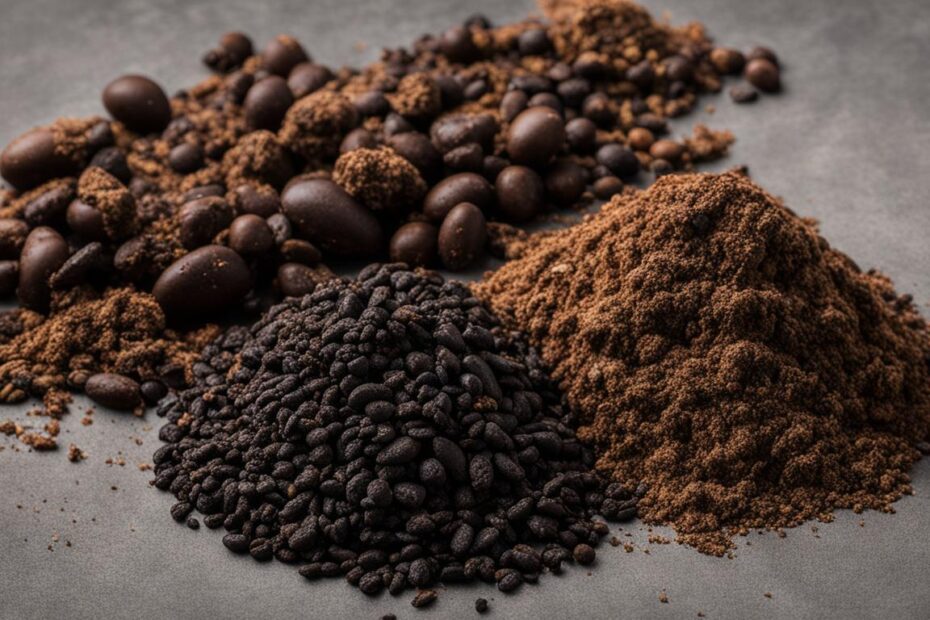Being able to identify the differences between deer scat and rabbit scat is important for understanding the animals that frequent your property. While both types of droppings may look similar at first glance, there are key characteristics that can help differentiate between the two. In this guide, we will explore the size, color, shape, texture, and other factors that can help you accurately identify whether it’s deer scat or rabbit scat that you’re dealing with.
Key Takeaways:
- Understanding the differences between deer scat and rabbit scat is crucial for proper identification.
- Deer scat is larger, black or dark brown, oval or cylindrical in shape, and has a smooth texture.
- Rabbit scat is smaller, light brown to dark brown, round or spherical in shape, and has a hard and dry texture.
- Both types of droppings are composed of plant matter and can be found in separate piles.
- Identifying animal droppings can help assess risks, conserve wildlife, and maintain a safe environment.
Identifying Deer Scat
When it comes to identifying deer scat, there are several key characteristics that can help distinguish it from other types of animal droppings. By examining the size, color, shape, and texture, you can accurately determine whether you’re dealing with deer scat or another type of feces.
Size: Deer scat is typically larger in size, ranging from approximately 1/2 to 5/8 inches long. This is one of the primary distinguishing factors between deer scat and smaller droppings, such as those produced by rabbits.
Color: The color of deer scat can vary from black to dark brown. This dark hue sets it apart from lighter-colored droppings that may be produced by other animals.
Shape and Texture: Deer scat is often oval or cylindrical in shape, and it may be clustered together in piles. The texture is smooth and can be slightly moist when fresh. These characteristics can help differentiate it from droppings that have a different shape or texture.
By paying attention to these key characteristics, you can confidently identify and differentiate deer scat from other types of animal droppings.
Identifying Rabbit Scat
Rabbit scat, also known as rabbit droppings, can be easily differentiated from deer scat by several key characteristics including size, color, shape, and texture. Understanding these differences can help you accurately identify whether the droppings you’ve encountered belong to a rabbit.
Rabbit scat is smaller in size compared to deer scat, typically measuring approximately 1/4 to 3/8 inches in diameter. It is usually light brown to dark brown in color. Unlike deer scat, which is often clustered together in piles, rabbit droppings are generally found in separate piles. They have a round or spherical shape and resemble small pebbles in texture with a hard and dry consistency.
By paying attention to the size, color, shape, and texture of the droppings, you can confidently determine if they are rabbit scat. It’s important to note that the diet of rabbits can influence the color and texture of their droppings, so variations may occur.
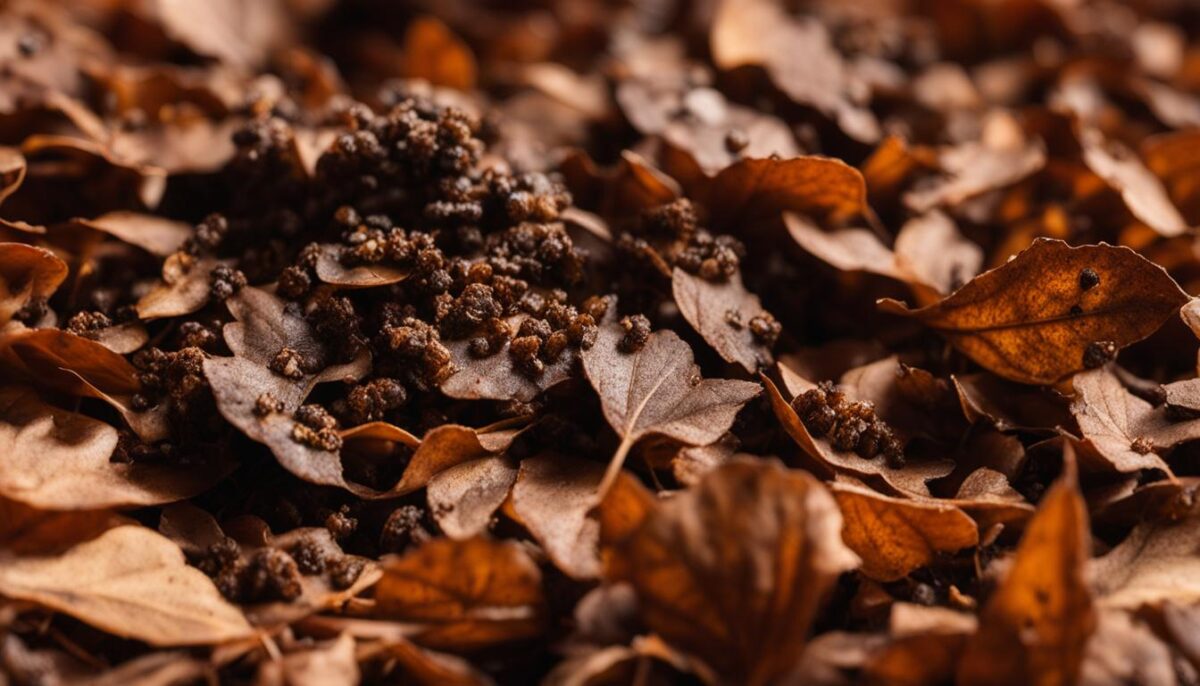
Table: Characteristics of Rabbit Scat
| Characteristics | Description |
|---|---|
| Size | Approximately 1/4 to 3/8 inches in diameter |
| Color | Light brown to dark brown |
| Shape | Round or spherical |
| Texture | Hard and dry, resembling small pebbles |
Key Differences Between Deer Scat and Rabbit Scat
When it comes to identifying animal droppings, knowing the key differences between deer scat and rabbit scat can be crucial. Here are the main distinctions to look for:
| Differences | Deer Scat | Rabbit Scat |
|---|---|---|
| Size | Approximately 1/2 to 5/8 inches long | Approximately 1/4 to 3/8 inches in diameter |
| Color | Black or dark brown | Light brown to dark brown |
| Shape | Oval or cylindrical | Round or spherical |
| Texture | Smooth and slightly moist | Hard and dry, resembling small pebbles |
These differences in size, color, shape, and texture can help you determine whether you’re dealing with deer scat or rabbit scat. Observing these characteristics will enable you to make more accurate identifications in the future.
Additional Factors to Consider
While the table provides a clear overview of the main differences, it’s important to note that there can be variations within each species. Factors such as diet and the animal’s overall health can influence the appearance of their droppings. Additionally, environmental conditions and the age of the scat can also impact its characteristics.
To make a definitive identification, it’s best to consider multiple factors along with the size, color, shape, and texture described above. Taking note of the location, frequency, and other behavior patterns of the animals can provide further clues.
Remember, accurate identification of deer scat versus rabbit scat is essential for understanding the wildlife in your area and taking appropriate actions to manage their presence. By familiarizing yourself with the key differences, you can confidently recognize and differentiate between these two types of animal droppings.
Similarities Between Deer Scat and Rabbit Scat
While deer scat and rabbit scat have distinct differences, there are also some notable similarities between these animal droppings. Understanding these similarities can help you further refine your identification process and gain a deeper understanding of the animals that frequent your property.
One key similarity is that both deer scat and rabbit scat are generally odorless or have a mild smell. This is in contrast to some other types of animal droppings that can have a strong and unpleasant odor. Additionally, both deer and rabbits have a diet primarily composed of plant matter, so their droppings reflect this by typically consisting of plant fibers and remnants.
Another similarity is the frequency of defecation. Both deer and rabbits often leave droppings multiple times a day, especially during active periods. This consistent pattern of defecation can be observed in the presence of fresh droppings in various areas frequented by these animals.
| Similarities Between Deer Scat and Rabbit Scat |
|---|
| Both types of droppings are generally odorless or have a mild smell. |
| Deer scat and rabbit scat are composed primarily of plant matter. |
| Both deer and rabbits defecate multiple times a day, leaving a consistent pattern of droppings. |
It’s important to note that while these similarities can provide some initial clues for identification, they should not be relied upon as the sole basis for determining whether it’s deer scat or rabbit scat. To make a definitive identification, it’s crucial to consider other factors such as size, color, shape, and texture as outlined in previous sections.
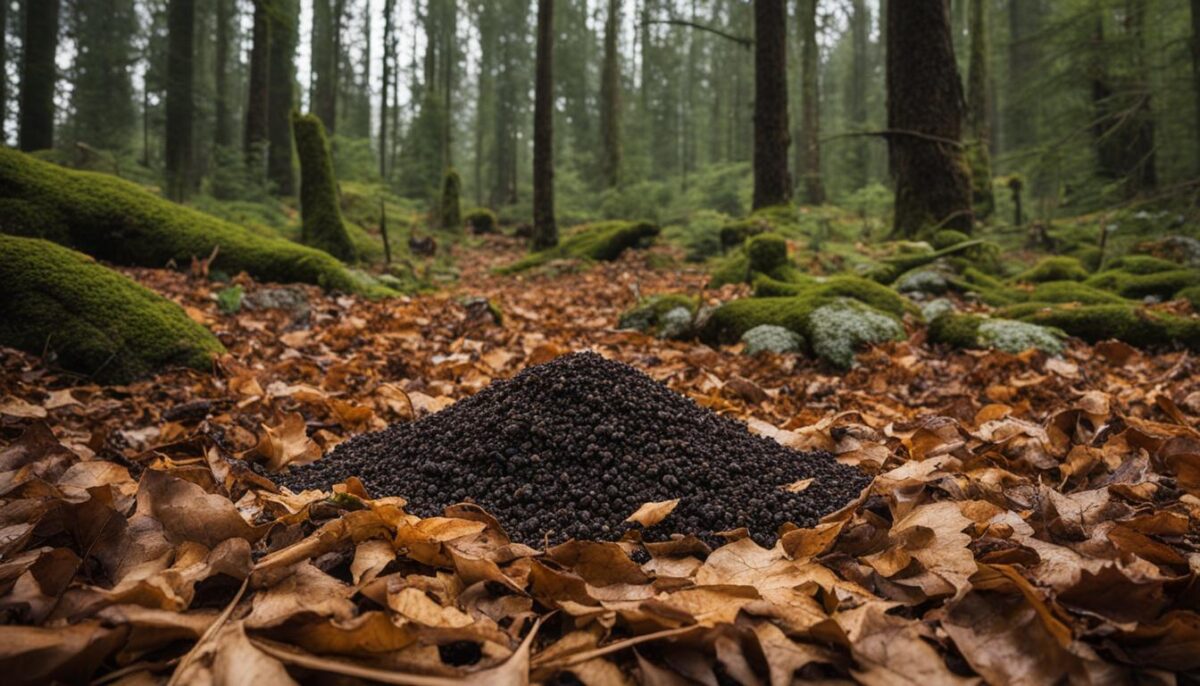
Additionally, identifying animal droppings provides clues about their diet and behavior, which can be valuable for conservation efforts and understanding the ecosystem. By studying the composition and characteristics of the droppings, researchers can gain insights into the animals’ feeding habits and contribute to wildlife management strategies.
Furthermore, proper identification of animal droppings is essential for ensuring the safety and well-being of both humans and animals. Some droppings may carry pathogens or parasites that can pose health risks, especially if they come into contact with food or water sources. By correctly identifying the droppings, you can take appropriate precautions to minimize these risks and maintain a healthy environment.
Tips for Identifying Deer Scat vs Rabbit Scat
Identifying deer scat and rabbit scat can be challenging due to their similar appearance. However, by paying close attention to certain characteristics, you can differentiate between the two. Here are some tips to help you accurately identify deer scat and rabbit scat:
Characteristics to Look for:
- Size: Deer scat is typically larger, measuring around 1/2 to 5/8 inches long, while rabbit scat is smaller, ranging from 1/4 to 3/8 inches in diameter.
- Color: Deer scat is usually black or dark brown, while rabbit scat is light brown to dark brown.
- Shape: Deer scat is often oval or cylindrical, whereas rabbit scat is round or spherical.
- Texture: Deer scat has a smooth texture and may be slightly moist when fresh, while rabbit scat is hard and dry, resembling small pebbles.
By observing these characteristics, you can make an accurate identification of whether the droppings you encounter are from deer or rabbits. Remember to consider the location and frequency of the droppings as well, as these factors can provide additional clues. If you’re still unsure, you can always consult a wildlife expert or refer to field guides for further assistance.
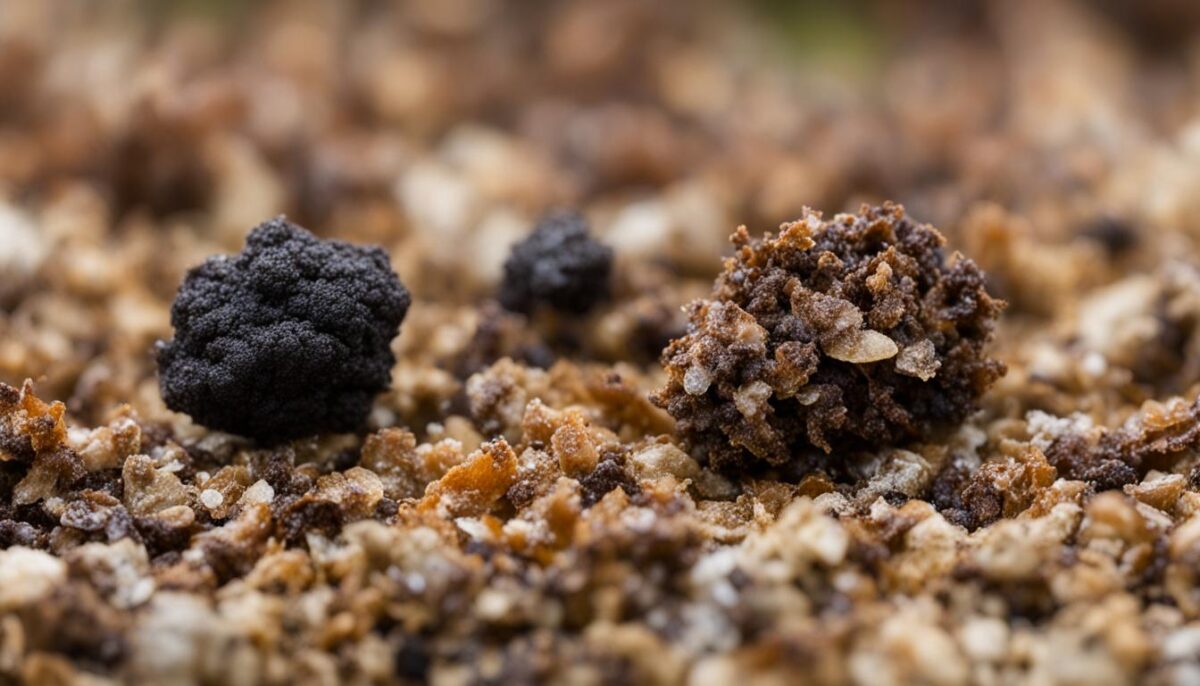
Example Table: Comparing Deer Scat and Rabbit Scat
| Characteristics | Deer Scat | Rabbit Scat |
|---|---|---|
| Size | Larger (1/2 to 5/8 inches long) | Smaller (1/4 to 3/8 inches in diameter) |
| Color | Black or dark brown | Light brown to dark brown |
| Shape | Oval or cylindrical | Round or spherical |
| Texture | Smooth and slightly moist when fresh | Hard and dry, resembling small pebbles |
By referring to this table, you can easily compare the key differences between deer scat and rabbit scat, making it easier to identify the droppings you come across in the future.
What to Do If You Find Deer Scat or Rabbit Scat
If you come across deer scat or rabbit scat on your property, it’s important to take the appropriate actions to ensure a safe and healthy environment. Here are the steps you can follow:
- Identify the type of droppings: Use the tips provided earlier to determine whether it’s deer scat or rabbit scat. Pay attention to the size, color, shape, and texture of the droppings.
- Assess the potential risks: Once you have identified the type of droppings, consider the potential risks associated with each animal. Deer scat may indicate the presence of larger wildlife, while rabbit scat can suggest a higher population of rabbits in the area.
- Take necessary measures: Depending on the risks identified, take appropriate measures to address the situation. This may include removing the droppings and implementing deterrents to discourage the animals from returning to your property.
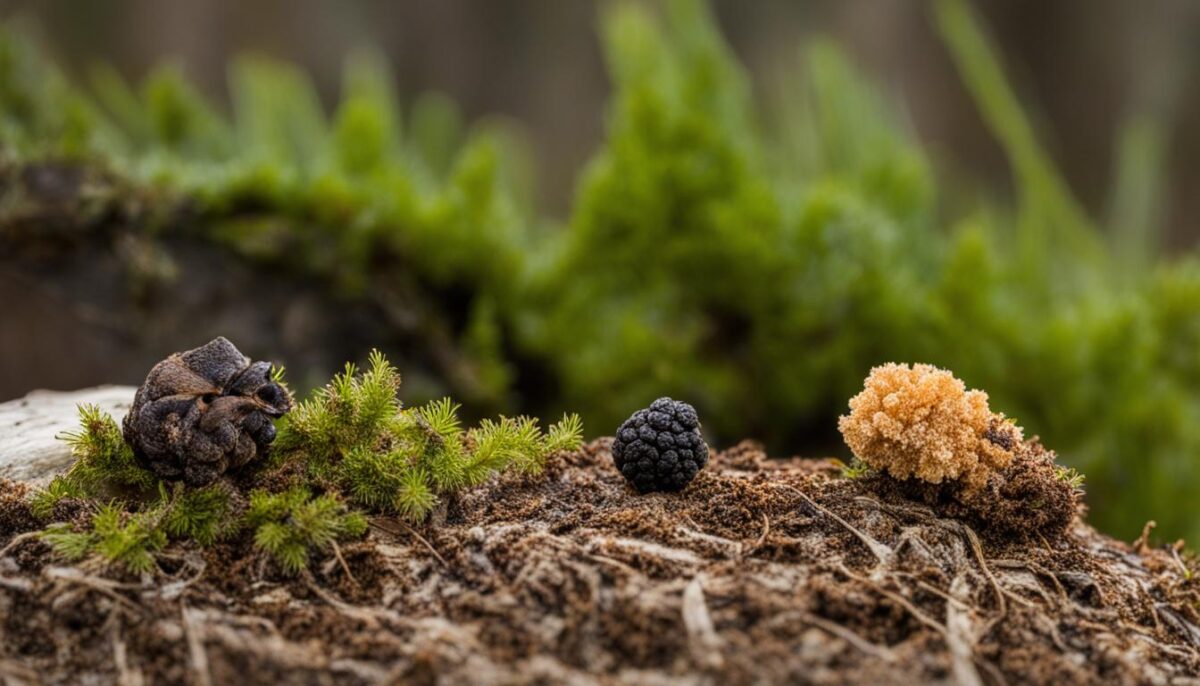
It’s important to note that if you are unsure about the cleanup process or have concerns about handling the droppings, it’s advisable to seek professional help. Particularly in cases of large-scale infestation or if there are safety concerns with vulnerable individuals in your household, such as young children or those with compromised immune systems, professional wildlife removal services can ensure the proper handling and safe removal of the droppings.
Table: Actions for Dealing with Deer Scat or Rabbit Scat
| Action | Description |
|---|---|
| Identify the type of droppings | Use the provided tips to determine whether it’s deer scat or rabbit scat. |
| Assess the potential risks | Consider the risks associated with each type of droppings to determine the appropriate course of action. |
| Take necessary measures | Remove the droppings and implement deterrents if needed to prevent further presence of the animals. |
| Seek professional help | If unsure or in cases of large-scale infestation or safety concerns, consult professional wildlife removal services. |
Cleaning Up Deer Scat or Rabbit Scat
When it comes to cleaning up deer scat or rabbit scat, it’s important to prioritize safety measures and take necessary precautions. These animal droppings may contain pathogens that can pose health risks, so it’s crucial to handle them properly. Here are some steps to follow:
- Wear gloves: Before starting the cleanup process, make sure to wear gloves to protect your hands from any potential pathogens present in the droppings. This will help prevent direct contact with the feces.
- Use disinfectants: To thoroughly clean the affected area, use a disinfectant that is effective against bacteria, viruses, and parasites. This will help kill any potential pathogens and prevent the spread of diseases.
- Properly dispose of the droppings: After cleaning up the deer scat or rabbit scat, it’s important to dispose of it properly. Place the droppings in sealed bags to avoid contamination and dispose of them in accordance with local regulations.
“Proper handling and disposal of deer scat or rabbit scat is crucial to minimize the risk of disease transmission. By following safety measures and taking necessary precautions, you can ensure a clean and safe environment.”
If you are unsure about the cleanup process or if the infestation is severe, it’s advisable to seek professional help. Professional wildlife removal services have the expertise and tools to handle the cleanup safely and effectively, especially in cases of large-scale infestations or when there are safety concerns.
| Step | Description |
|---|---|
| 1 | Wear gloves |
| 2 | Use disinfectants |
| 3 | Properly dispose of the droppings |
When to Seek Professional Help
While identifying deer scat vs rabbit scat can be done by following the tips mentioned earlier, there are certain situations where seeking professional help is advisable. If you are dealing with a large-scale infestation of either deer or rabbits, professional assistance can ensure effective removal and management of the problem. Professionals have the expertise and resources to handle infestations safely and efficiently, reducing any potential risks or further damage to your property.
In addition, if you have safety concerns or vulnerable individuals in your household, such as young children or individuals with compromised immune systems, it is recommended to seek professional help. Professionals can address the specific safety concerns associated with deer scat or rabbit scat, ensuring that proper precautions are taken during removal to minimize any health risks.
Professional wildlife removal services can provide comprehensive solutions for deer scat removal or rabbit scat removal. They will assess the situation, develop a customized plan, and employ appropriate measures to effectively deal with the infestation. Their expertise in handling wildlife droppings and implementing preventive measures can help prevent future occurrences, ensuring a safe and healthy environment for you and your family.
Why Seek Professional Help?
1. Expertise: Wildlife removal professionals have extensive knowledge and experience in identifying and handling different types of animal droppings, including deer scat and rabbit scat. They can accurately assess the situation, determine the best course of action, and implement effective strategies to address the infestation.
2. Safety: Removing deer scat or rabbit scat can pose health risks due to potential pathogens or parasites present in the droppings. Professionals are equipped with the necessary protective gear and follow strict safety protocols during the removal process to minimize any health hazards.
3. Prevention: Professional wildlife removal services not only remove the existing droppings but also take preventive measures to deter deer or rabbits from returning to your property. This can include implementing barriers, habitat modifications, or other humane deterrent methods to prevent future infestations.
Conclusion
Identifying deer scat versus rabbit scat is crucial when it comes to understanding the wildlife that frequents your property. Although these animal droppings may appear similar, there are distinct characteristics that can help you differentiate between the two. By closely examining the size, color, shape, and texture of the droppings, you can accurately determine whether it’s deer scat or rabbit scat.
Knowing the differences and similarities between these types of animal droppings is essential for assessing risks, taking appropriate actions, and maintaining a safe and healthy environment. Both deer scat and rabbit scat are generally odorless and composed of plant matter. However, deer scat is larger, black or dark brown, oval or cylindrical, and has a smooth texture. On the other hand, rabbit scat is smaller, light brown to dark brown, round or spherical, and has a hard and dry texture.
By following the tips and guidelines provided in this guide, you can confidently identify and handle deer scat versus rabbit scat. Understanding these animal droppings will enable you to gain valuable insights into the wildlife that surrounds you, assess any potential risks or threats, and take appropriate measures to address them. Remember to practice safety measures when cleaning up the droppings and seek professional help if needed.
FAQ
How can I identify deer scat?
Deer scat is typically larger in size compared to rabbit scat, ranging from approximately 1/2 to 5/8 inches long. It can vary in color from black to dark brown. The shape of deer scat is often oval or cylindrical, and it may be clustered together in piles. The texture is smooth and can be slightly moist when fresh.
How can I identify rabbit scat?
Rabbit scat is smaller in size compared to deer scat, typically measuring approximately 1/4 to 3/8 inches in diameter. The color of rabbit scat is usually light brown to dark brown. Rabbit droppings are generally round or spherical in shape, and they are often found in separate piles rather than clustered together. The texture of rabbit scat is hard and dry, resembling small pebbles.
What are the key differences between deer scat and rabbit scat?
Deer scat is larger in size, ranging from 1/2 to 5/8 inches long, while rabbit scat is smaller, measuring approximately 1/4 to 3/8 inches in diameter. Deer scat is usually black or dark brown in color, while rabbit scat is light brown to dark brown. Deer droppings are oval or cylindrical in shape and often clustered together, whereas rabbit droppings are round or spherical and found in separate piles. The texture of deer scat is smooth and slightly moist, while rabbit scat is hard and dry, resembling small pebbles.
Are there any similarities between deer scat and rabbit scat?
Both types of droppings are generally odorless or have a mild smell. They are also both composed of plant matter, although it can be difficult to discern specific food sources from the droppings alone. Additionally, the frequency of defecation can be similar, with both deer and rabbits often leaving droppings multiple times a day. However, these similarities should not be used as the sole basis for identification.
Why is it important to identify animal droppings?
Identifying animal droppings, whether it’s deer scat or rabbit scat, is important for several reasons. It allows you to gain valuable insight into the animals that frequent your property or surroundings. This information can help you assess any potential risks or threats posed by these animals and take appropriate steps to address them. Additionally, identifying wildlife scat can provide clues about the animal’s diet and behavior, which can be helpful for conservation efforts and understanding the ecosystem.
What are some tips for identifying deer scat vs rabbit scat?
To accurately identify deer scat vs rabbit scat, pay attention to the size, color, shape, and texture of the droppings. Deer scat is typically larger, black or dark brown, oval or cylindrical in shape, and has a smooth texture. Rabbit scat, on the other hand, is smaller, light brown to dark brown, round or spherical in shape, and has a hard and dry texture.
What should I do if I find deer scat or rabbit scat on my property?
If you find deer scat or rabbit scat on your property, start by identifying the type of droppings using the tips mentioned earlier. Once you have identified whether it’s deer scat or rabbit scat, you can consider the potential risks associated with each animal and take necessary measures to address them. This may include removing the droppings and implementing measures to deter the animals from your property, if necessary.
How should I clean up deer scat or rabbit scat?
When cleaning up deer scat or rabbit scat, it’s important to take safety measures and precautions. Wear gloves to protect your hands from any potential pathogens present in the droppings. Use disinfectants to thoroughly clean the affected area and prevent the spread of any diseases. Properly dispose of the droppings in sealed bags to avoid contamination. If you are unsure about the cleanup process, it’s advisable to seek professional help to ensure proper handling and disposal.
When should I seek professional help for deer scat or rabbit scat removal?
In some cases, it may be necessary to seek professional help for deer scat or rabbit scat removal. If you are dealing with a large-scale infestation or repeated presence of droppings despite your efforts to deter the animals, it may be best to consult a professional wildlife removal service. Additionally, if you have safety concerns or vulnerable individuals in your household, such as young children or individuals with compromised immune systems, professional help can ensure the proper handling and safe removal of the droppings.
How can I accurately identify deer scat vs rabbit scat?
Identifying deer scat vs rabbit scat can be challenging due to their similarities in appearance. However, by closely examining the size, color, shape, and texture of the droppings, you can accurately determine whether it’s deer scat or rabbit scat. Understanding the key differences and similarities between these animal droppings is important for assessing risks, taking appropriate actions, and maintaining a safe and healthy environment.


